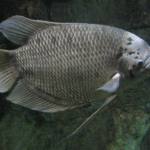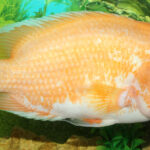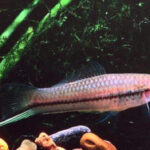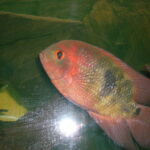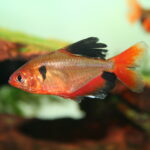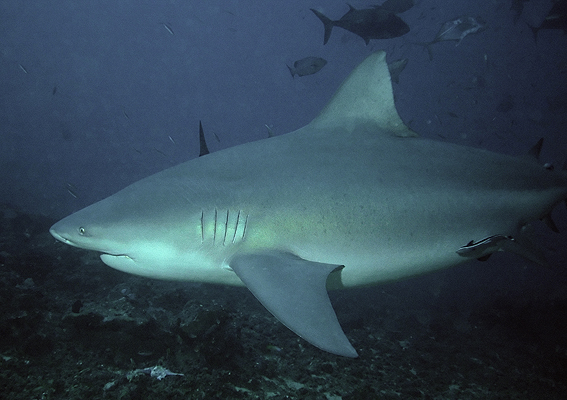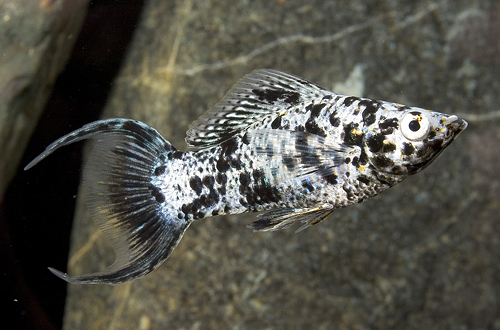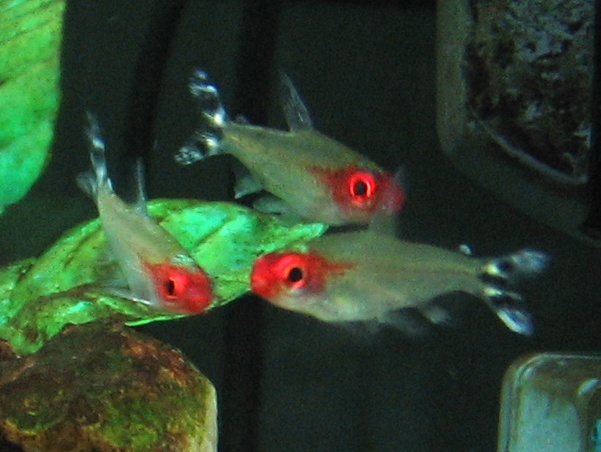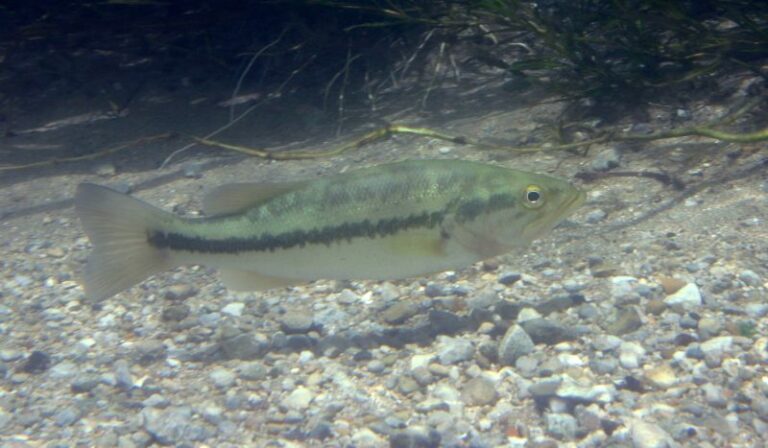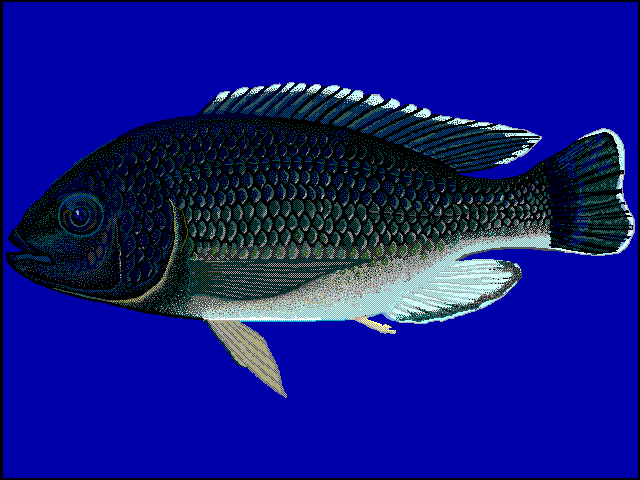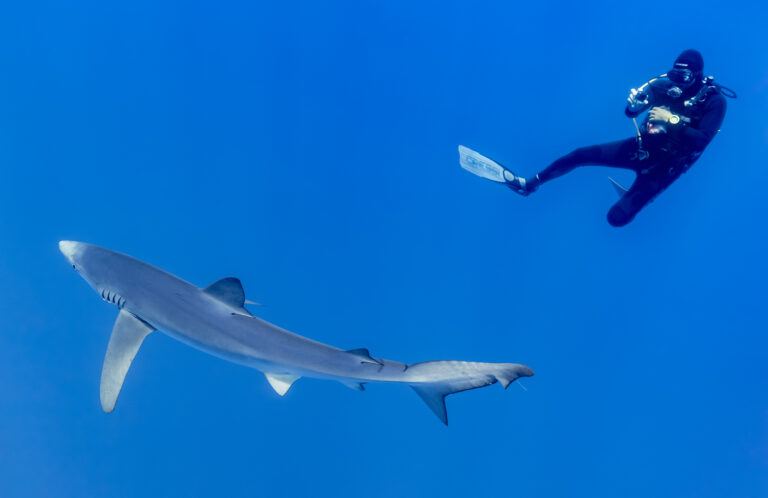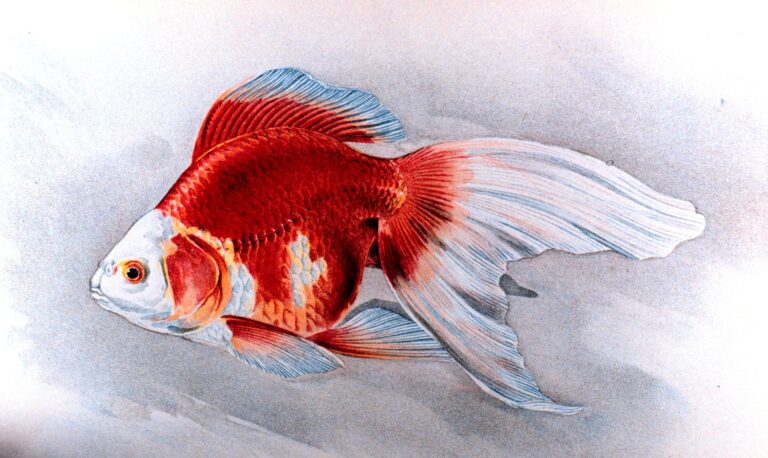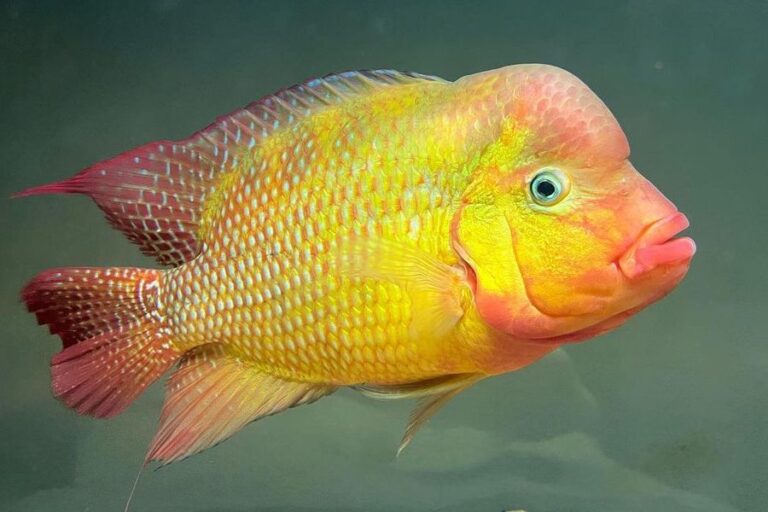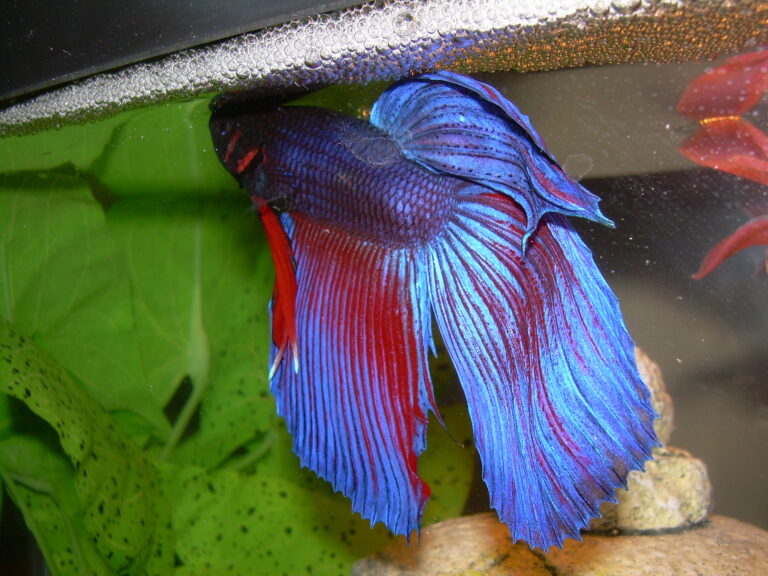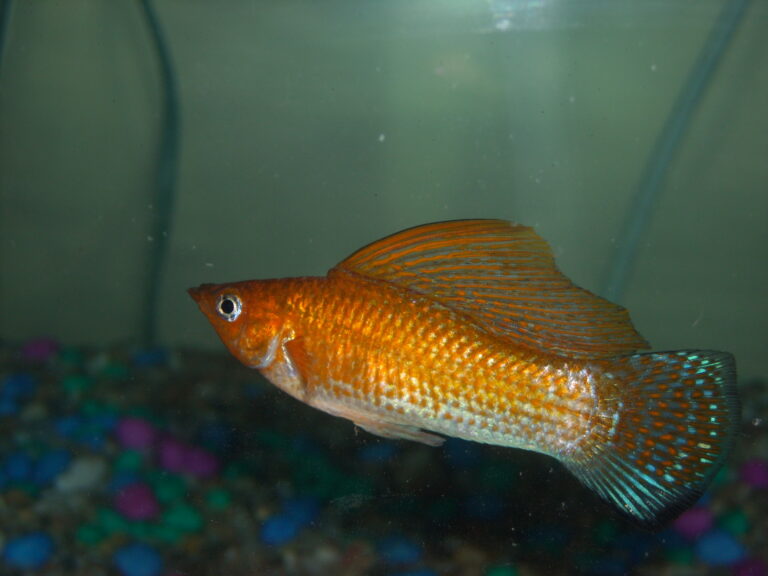Blue Catfish
By Ryan Maron | Last Modified: July 5, 2025
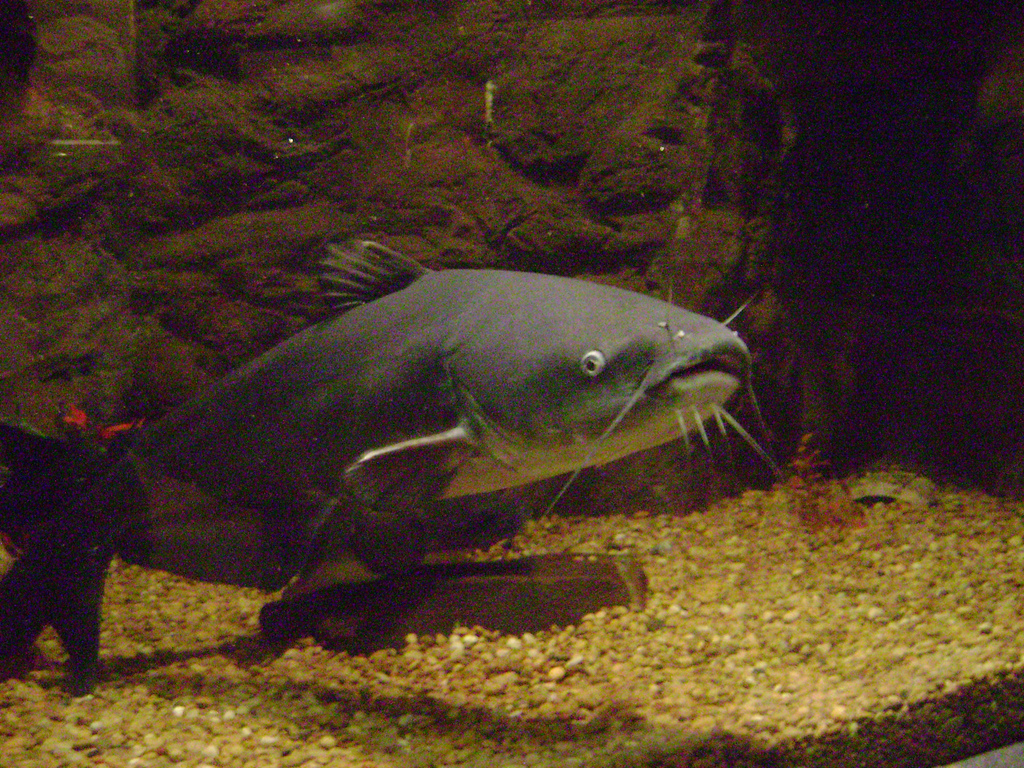
The Blue Catfish (Ictalurus furcatus) stands as North America’s largest freshwater catfish species and represents one of the continent’s most formidable aquatic predators. This powerful bottom-dweller commands respect among anglers and biologists alike for its impressive size potential, reaching weights exceeding 100 pounds in optimal conditions. Native to the major river systems of the central and southeastern United States, the Blue Catfish plays a crucial ecological role as both apex predator and keystone species within freshwater environments.
The species demonstrates remarkable adaptability to diverse aquatic habitats, from swift-flowing river channels to expansive reservoir systems. Blue Catfish populations support significant commercial and recreational fisheries across their range, contributing millions of dollars annually to regional economies. Their presence indicates healthy freshwater ecosystems, as these fish require well-oxygenated waters and abundant prey populations to thrive. However, introduced populations in non-native watersheds have raised conservation concerns, particularly in Chesapeake Bay tributaries where they compete with native species.
| Feature | Details |
|---|---|
| Common Name | Blue Catfish |
| Scientific Name | Ictalurus furcatus |
| Family | Ictaluridae |
| Typical Size | 60-120 cm (24-47 inches), 5-50 pounds |
| Habitat | Large rivers, reservoirs, deep pools |
| Diet | Omnivorous opportunist |
| Distribution | Central and southeastern United States |
| Conservation Status | Least Concern |
Taxonomy & Classification
The Blue Catfish belongs to the family Ictaluridae, which encompasses all North American freshwater catfish species. First scientifically described by Constantine Samuel Rafinesque in 1820, Ictalurus furcatus derives its specific epithet “furcatus” from the Latin word meaning “forked,” referencing the species’ distinctively forked caudal fin. This taxonomic designation distinguishes it from other members of the Ictalurus genus, including the closely related Channel Catfish (Ictalurus punctatus).
Within the Ictaluridae family, Blue Catfish represent the largest North American species, sharing evolutionary origins that trace back approximately 50 million years. The genus Ictalurus contains eight recognized species, with Blue Catfish demonstrating the most specialized adaptations for large river environments. Genetic studies reveal distinct population structures across different river basins, suggesting limited gene flow between major watersheds and potential subspecies differentiation.
Modern phylogenetic analysis places Ictalurus furcatus as sister species to the Channel Catfish, with divergence occurring during the Pliocene epoch. This relationship explains many shared behavioral and morphological characteristics while highlighting the Blue Catfish’s specialized adaptations for deeper, faster-flowing waters. Recent molecular research has identified several genetic markers unique to Blue Catfish populations, facilitating accurate species identification in areas where hybridization with Channel Catfish occurs.
Physical Description
Blue Catfish exhibit a robust, streamlined body plan optimized for life in powerful river currents and deep water environments. Adult specimens typically measure 60 to 120 centimeters in length, though exceptional individuals can exceed 150 centimeters. The species displays pronounced sexual dimorphism, with mature females often growing larger than males and developing more rounded body profiles during spawning season.
The species’ coloration ranges from slate blue to gray along the dorsal surface, transitioning to silvery-white on the ventral regions. This counter-shading provides effective camouflage in both shallow and deep water environments. Unlike Channel Catfish, Blue Catfish lack distinct spotting patterns, instead displaying uniform coloration that may darken with age and environmental conditions. The skin remains scaleless and covered in a protective mucus layer that aids in disease resistance and hydrodynamic efficiency.
Blue Catfish possess the characteristic barbel arrangement of all ictalurids, featuring eight sensory whiskers that function as highly sophisticated chemoreceptors. The maxillary barbels extend well beyond the head length, while the nasal and mental barbels provide close-range detection capabilities. These structures contain thousands of taste buds, enabling detection of chemical gradients as low as parts per billion concentrations.
The dorsal fin structure provides crucial taxonomic identification features, with Blue Catfish displaying 6 to 7 soft rays following a single sharp spine. The anal fin contains 30 to 36 rays, significantly more than Channel Catfish, representing a key diagnostic characteristic. The deeply forked caudal fin generates powerful propulsion, while the adipose fin lacks the free posterior margin found in many related species.
Habitat & Distribution
Blue Catfish demonstrate strong preferences for large river systems and associated reservoir environments throughout their native range. The species originally inhabited the Mississippi River basin, extending from the Great Lakes region southward to the Gulf of Mexico, with additional populations in Rio Grande and Mobile Bay drainages. Major river systems supporting significant Blue Catfish populations include the Mississippi, Missouri, Ohio, Arkansas, and Tennessee rivers.
These fish exhibit remarkable depth tolerance, commonly inhabiting areas ranging from shallow riffle zones to depths exceeding 30 meters in reservoir environments. Blue Catfish show particular affinity for main channel borders, tributary confluences, and deep pools with moderate to swift current flows. Optimal habitat features include rocky or gravel substrates, submerged timber, and areas with consistent water flow that provides adequate dissolved oxygen levels.
Water quality requirements reflect the species’ adaptation to large river environments, with Blue Catfish tolerating temperatures from 4°C to 32°C and thriving in waters with dissolved oxygen concentrations above 5 milligrams per liter. The species demonstrates considerable salinity tolerance, surviving in brackish conditions up to 15 parts per thousand, which facilitates colonization of tidal river reaches and estuarine environments.
Introduced populations now exist in numerous non-native watersheds, including Chesapeake Bay tributaries, several Atlantic coastal rivers, and western reservoir systems. These introductions, often resulting from aquaculture escapes or unauthorized stockings, have established self-sustaining populations that significantly impact local ecosystems. The Chesapeake Bay population represents the most notable introduction, with Blue Catfish now supporting commercial fisheries in Virginia and Maryland waters.
Diet & Feeding Behavior
Blue Catfish function as opportunistic omnivores with feeding strategies that adapt to seasonal prey availability and habitat conditions. Juvenile fish primarily consume aquatic invertebrates, including chironomid larvae, mayfly nymphs, and amphipods, gradually transitioning to more diverse diets as they mature. Adult Blue Catfish demonstrate remarkable dietary flexibility, consuming fish, crustaceans, mollusks, plant matter, and organic detritus.
Piscivorous behavior becomes increasingly prominent in larger individuals, with fish comprising up to 70% of the diet in adult specimens exceeding 50 centimeters. Primary prey species include gizzard shad, threadfin shad, skipjack herring, and various cyprinid species. Blue Catfish exhibit sophisticated hunting strategies, using their sensitive barbels to locate prey in turbid water conditions and employing powerful suction feeding to capture fast-moving targets.
Feeding activity follows distinct diel patterns, with peak foraging occurring during twilight hours and continuing throughout the night. This nocturnal behavior aligns with prey fish movement patterns and provides advantages in avoiding visual predators. Blue Catfish demonstrate seasonal feeding variations, with maximum consumption rates occurring during spring and early summer when water temperatures reach optimal levels between 24°C and 28°C.
The species’ feeding behavior significantly influences aquatic food webs, particularly in reservoir environments where Blue Catfish can control forage fish populations. Their benthic foraging activities also affect substrate conditions and nutrient cycling processes. Studies indicate that large Blue Catfish can consume up to 8% of their body weight daily during peak feeding periods, highlighting their substantial impact on prey populations and ecosystem energy flow.
Behavior & Adaptations
Blue Catfish exhibit complex behavioral patterns adapted to large river environments and deep water habitats. The species demonstrates remarkable migratory capabilities, with individuals traveling hundreds of kilometers during spawning migrations and seasonal movements. These movements follow predictable patterns related to water temperature, flow conditions, and reproductive cycles, often involving upstream migrations to spawning areas and downstream dispersal to feeding grounds.
Social behavior varies considerably with age and season, with juvenile Blue Catfish forming loose aggregations in shallow water areas while adults typically exhibit more solitary tendencies. During winter months, large individuals congregate in deep pools and channel areas where water temperatures remain stable. These wintering aggregations can contain dozens of adult fish and represent important considerations for fishing pressure and population management.
The species possesses highly developed sensory adaptations for life in turbid, deep water environments. Beyond their exceptional chemoreception capabilities, Blue Catfish utilize sophisticated lateral line systems to detect water movement and pressure changes. This mechanoreception allows efficient navigation in complete darkness and detection of approaching prey or predators through water displacement patterns.
Blue Catfish demonstrate remarkable physiological adaptations to variable environmental conditions. Their gill structure efficiently extracts oxygen from water with concentrations as low as 3 milligrams per liter, while specialized swim bladder modifications enable precise depth control in deep water environments. Temperature tolerance mechanisms allow survival in near-freezing conditions and rapid adjustment to seasonal temperature fluctuations exceeding 25°C.
Territorial behavior becomes pronounced during spawning periods, with mature males establishing and defending nesting sites against intruders. These territories encompass cavities beneath undercut banks, root systems, or artificial structures that provide protection for developing eggs and larvae. Males exhibit aggressive displays including lateral positioning, mouth gaping, and physical contact to maintain territorial boundaries.
Reproduction & Life Cycle
Blue Catfish reproduction follows complex patterns synchronized with environmental conditions and seasonal cycles. Sexual maturity typically occurs between ages 4 and 7, corresponding to lengths of 35 to 50 centimeters, though growth rates vary significantly among populations and habitats. Females generally mature at larger sizes than males and develop greater reproductive capacity throughout their extended lifespans.
Spawning activities commence when water temperatures reach 21°C to 24°C, typically occurring from late April through July across most of their range. Males initiate reproductive behavior by excavating or selecting nesting cavities in protected areas such as undercut banks, root systems, submerged logs, or rocky crevices. These nests provide essential protection from current and predation during the vulnerable egg and larval stages.
Courtship behavior involves elaborate displays and physical interactions between potential mates. Males produce low-frequency vocalizations using specialized sonic muscles and swim bladder modifications to attract females and communicate reproductive readiness. Successful pair bonding leads to spawning events where females deposit 4,000 to 70,000 adhesive eggs depending on body size and condition.
Male parental care represents a crucial aspect of Blue Catfish reproduction, with nest-guarding males remaining with eggs throughout the 6 to 10 day incubation period. Males actively fan eggs to maintain water circulation and remove debris or fungal infections that threaten development. This dedicated parental investment continues after hatching, with males protecting fry until they disperse from nesting areas.
Larval development progresses through distinct stages, with newly hatched fry measuring approximately 7 millimeters and possessing yolk sacs that sustain them for 5 to 7 days. Upon yolk absorption, larvae begin active feeding on zooplankton and gradually transition to benthic invertebrates as they develop. Growth rates vary substantially based on temperature, food availability, and population density, with young-of-year fish typically reaching 15 to 25 centimeters by their first winter.
Blue Catfish demonstrate exceptional longevity among North American freshwater fish, with documented lifespans exceeding 25 years and some individuals potentially reaching 40 years. This extended lifespan contributes to their role as apex predators and allows multiple reproductive opportunities throughout their lives. However, it also makes populations vulnerable to overfishing and environmental degradation due to slow recruitment rates.
Predators & Threats
Adult Blue Catfish face relatively few natural predators due to their large size and defensive capabilities, though several species pose threats to different life stages. Largemouth bass, striped bass, and other large piscivorous fish prey upon juvenile Blue Catfish, while birds such as cormorants, herons, and pelicans capture smaller individuals in shallow water areas. Aquatic reptiles including alligators and large snapping turtles occasionally consume Blue Catfish, particularly in southern portions of their range.
The most significant predation pressure affects eggs and larvae during the vulnerable early life stages. Numerous fish species, including other catfish, sunfish, and cyprinids, actively consume Blue Catfish eggs when parental males are absent or distracted. Crayfish and aquatic insects also contribute to egg and larval mortality, particularly in areas with high invertebrate densities.
Human activities represent the primary threat to Blue Catfish populations throughout their range. Commercial and recreational fishing pressure has intensified significantly in recent decades, with some populations showing signs of exploitation. Habitat modification through dam construction, channel alteration, and water diversions disrupts critical spawning and nursery areas while fragmenting populations and limiting genetic exchange.
Water quality degradation poses increasingly serious threats to Blue Catfish populations. Agricultural runoff, industrial discharges, and urban stormwater contribute to eutrophication, hypoxia, and toxic contamination in many river systems. Blue Catfish bioaccumulate heavy metals and organic pollutants through their position in aquatic food webs, potentially affecting reproduction and survival rates.
Climate change impacts include altered precipitation patterns, increased frequency of extreme weather events, and shifting temperature regimes that may disrupt spawning cycles and habitat availability. Prolonged droughts reduce water levels and concentrate pollutants, while severe flooding can displace fish from established territories and destroy spawning habitat.
Invasive species competition affects Blue Catfish through multiple pathways. Non-native zebra mussels alter food webs by filtering phytoplankton and reducing energy available to higher trophic levels. Asian carp species compete directly for food resources and habitat space, while their rapid reproduction rates can overwhelm ecosystem carrying capacity.
Conservation Status
The International Union for Conservation of Nature (IUCN) currently classifies Blue Catfish as Least Concern due to stable populations throughout most of their native range and their adaptability to diverse habitat conditions. However, this broad classification masks significant regional variations in population status and emerging conservation challenges that warrant careful monitoring and management attention.
Several state wildlife agencies have implemented specific regulations to protect Blue Catfish populations, including minimum size limits, bag limits, and seasonal restrictions in areas experiencing heavy fishing pressure. The Mississippi Department of Wildlife, Fisheries, and Parks has established slot limits in some waters to protect breeding-size fish, while Missouri has implemented reduced bag limits on several major reservoirs to maintain trophy fishing opportunities.
Habitat restoration efforts focus on improving spawning and nursery areas through dam modification, riparian restoration, and water quality improvement projects. The U.S. Army Corps of Engineers has modified several dam structures to improve fish passage and restore natural flow patterns that benefit Blue Catfish reproduction. These modifications include fish ladders, bypass channels, and altered water release schedules that better mimic natural hydrologic cycles.
Water quality monitoring programs track pollution levels and habitat conditions in major Blue Catfish waters. The Environmental Protection Agency’s Clean Water Act enforcement has improved conditions in many river systems, though agricultural runoff and urban development continue to pose challenges. Total Maximum Daily Load (TMDL) programs address specific pollutants affecting aquatic life in impaired watersheds.
Research initiatives supported by state and federal agencies investigate Blue Catfish population dynamics, habitat requirements, and response to environmental stressors. The U.S. Geological Survey conducts long-term monitoring studies that provide essential data for adaptive management strategies. University research programs contribute valuable information on genetics, physiology, and ecological interactions that inform conservation decisions.
Management challenges include balancing conservation needs in native habitats with control efforts in non-native environments where Blue Catfish impact threatened species. The Chesapeake Bay represents a complex management scenario where Blue Catfish support valuable fisheries while potentially competing with native species including striped bass and American shad.
Human Interaction
Blue Catfish support significant commercial and recreational fisheries throughout their range, contributing substantial economic value to regional communities. Commercial operations harvest millions of pounds annually, primarily in the Mississippi River system and Chesapeake Bay tributaries. The fish’s firm, white meat commands premium prices in both domestic and international markets, with growing demand from restaurants and food processors.
Recreational fishing for Blue Catfish has experienced tremendous growth, with specialized tournaments attracting thousands of participants and generating millions in economic impact. Trophy fishing destinations include reservoirs such as Santee Cooper in South Carolina, Wheeler Lake in Alabama, and several Missouri River impoundments. These fisheries support guide services, lodging facilities, and tackle industries that depend on healthy Blue Catfish populations.
Aquaculture operations increasingly incorporate Blue Catfish due to their rapid growth rates, disease resistance, and market acceptance. Commercial fish farms in the southeastern United States produce Blue Catfish in both monoculture and polyculture systems. Research continues into optimal feeding strategies, selective breeding programs, and disease management protocols to improve production efficiency.
Cultural significance varies among different communities, with Blue Catfish holding particular importance in southern and midwestern traditions. The species features prominently in regional cuisine, fishing folklore, and outdoor recreation activities that connect people with aquatic environments. Annual festivals and community events celebrate Blue Catfish fishing and contribute to local tourism economies.
Educational programs utilize Blue Catfish as flagship species for freshwater conservation awareness. Their impressive size, accessibility to anglers, and ecological importance make them effective ambassadors for river and reservoir protection efforts. School programs, nature centers, and fishing clinics frequently feature Blue Catfish to engage young people in aquatic science and conservation activities.
Management partnerships between government agencies, fishing organizations, and conservation groups coordinate research, habitat improvement, and sustainable fishing practices. These collaborations demonstrate the potential for effective stakeholder engagement in natural resource management while balancing diverse interests and objectives.
Interesting Facts
Blue Catfish hold numerous freshwater fishing records, with the current world record specimen weighing 143 pounds and measuring over 57 inches long. This remarkable fish was caught from Kerr Lake on the Virginia-North Carolina border in 2011, surpassing the previous record that had stood for over two decades. Several state records exceed 100 pounds, demonstrating the species’ exceptional growth potential in optimal environments.
The species exhibits remarkable longevity among North American freshwater fish, with some individuals potentially living over 40 years. Age determination studies using otolith analysis have documented specimens exceeding 25 years, though the maximum lifespan remains uncertain due to limited data from very old fish. This extended lifespan contributes to their role as apex predators and allows accumulation of impressive size.
Blue Catfish possess extraordinary sensory capabilities, with taste buds distributed across their entire body surface rather than concentrated only in the mouth. Scientists estimate that large Blue Catfish may possess over 100,000 taste buds, providing chemical detection abilities that surpass most vertebrate species. This adaptation allows them to locate food sources in murky water conditions where visual cues are minimal.
The species demonstrates remarkable adaptability to salinity changes, surviving in brackish water conditions that would stress many freshwater fish. This tolerance has enabled Blue Catfish to colonize tidal river reaches and estuarine environments, expanding their habitat range and contributing to successful introductions in coastal watersheds.
Blue Catfish exhibit sophisticated communication behaviors through sound production, generating various clicks, grunts, and drumming sounds using specialized muscles and swim bladder modifications. These vocalizations serve multiple functions including territorial defense, mate attraction, and distress signals when captured or threatened.
Historical accounts describe massive Blue Catfish populations in major river systems before extensive habitat modification and commercial exploitation. Early settlers reported fish exceeding 200 pounds, though such claims remain unverified by modern standards. Archaeological evidence suggests that Native American cultures utilized Blue Catfish as important protein sources and incorporated them into cultural practices and seasonal migration patterns.
The species’ scientific name “furcatus” reflects their distinctive forked tail structure, which generates efficient propulsion in river current conditions. This adaptation distinguishes them from Channel Catfish and other ictalurids while providing superior swimming performance in their preferred habitat environments.
Frequently Asked Questions
How large do Blue Catfish typically grow?
Blue Catfish commonly reach lengths of 24 to 47 inches and weights between 5 and 50 pounds in most populations. However, exceptional individuals can exceed 100 pounds and measure over 57 inches long. Growth rates vary significantly based on habitat quality, food availability, and fishing pressure, with fish in productive reservoir environments typically achieving larger sizes than those in heavily fished river systems.
What distinguishes Blue Catfish from Channel Catfish?
Blue Catfish can be identified by their lack of spots, deeper body profile, and higher anal fin ray count (30-36 rays compared to 24-29 in Channel Catfish). Blue Catfish also grow significantly larger, prefer deeper water habitats, and have a more forked tail structure. Their coloration tends toward blue-gray rather than the olive-brown typical of Channel Catfish.
Are Blue Catfish good to eat?
Blue Catfish provide excellent table fare with firm, white meat that has a mild flavor profile. The species is highly regarded by commercial and recreational fishers for its culinary quality, often compared favorably to other popular food fish. Proper handling and preparation techniques ensure optimal taste, with smaller fish generally preferred for eating while larger specimens are often released to maintain trophy fishing opportunities.
Where can I catch Blue Catfish?
Blue Catfish inhabit major river systems and associated reservoirs throughout the central and southeastern United States. Prime fishing locations include the Mississippi River system, Tennessee River reservoirs, Missouri River impoundments, and introduced populations in Chesapeake Bay tributaries. They prefer deep water areas with current flow, channel edges, and structures such as submerged timber or rocky areas.
Conclusion
Blue Catfish represent one of North America’s most impressive freshwater species, combining remarkable size potential with crucial ecological functions and significant economic value. Their adaptability to diverse aquatic environments and exceptional longevity make them important indicators of freshwater ecosystem health while supporting valuable fisheries throughout their range. Continued conservation efforts, sustainable management practices, and habitat protection remain essential for maintaining healthy Blue Catfish populations for future generations to study, catch, and appreciate.
Share The Article:
More Fish Species:
-
Bull Shark
The Bull Shark represents one of the most formidable apex predators in marine ecosystems worldwide. Known scientifically as Carcharhinus…
-
Lyretail Molly
The Lyretail Molly (*Poecilia latipinna*) stands as one of the most recognizable and ecologically significant freshwater fish species in…
-
Rummy Nose Tetra
The Rummy Nose Tetra stands as one of the most distinctive and recognizable small freshwater fish species in South…
-
Largemouth Bass
The Largemouth Bass, scientifically known as *Micropterus salmoides*, stands as one of North America’s most iconic freshwater gamefish and…
-
Cichlid
Cichlids represent one of the most diverse and fascinating families of freshwater fish, encompassing over 1,700 species distributed across…
-
Blue Shark
The Blue Shark (Prionace glauca) represents one of the ocean’s most accomplished travelers, traversing entire ocean basins in epic…
Discover
-
Caribbean Inshore Fishing: Bonefish and Permit Tactics
There’s something almost magical about stalking the shallow flats of the Caribbean. I still remember my first bonefish –…
-
How to Catch Mahi-Mahi: Offshore Tactics That Fill Coolers Fast
I still remember my first encounter with mahi-mahi (also called dolphin fish or dorado). We were about 20 miles…
-
Winter Fishing Tips: 7 Cold-Weather Tactics Successful Anglers Use
Most anglers pack away their gear when the temperature drops, but the dedicated few know something the others don’t:…
-
Pacific Northwest Salmon Fishing: Guide to Puget Sound and Columbia River
There’s something almost magical about the way Pacific Northwest salmon fight on the end of your line. I still…
-
Fishing Ethics: Conservation, Catch-and-Release, and Angler Responsibility
I was ten years old when my grandfather caught me throwing rocks at a school of bluegill near our…
-
How to Fish for Wahoo: 5 Proven Tactics from a Pro Angler
If there’s one fish that’s made me question my sanity over the years, it’s the wahoo. These lightning-fast predators…
Discover
-
Ryukin Goldfish
The Ryukin Goldfish (Carassius auratus) stands as one of the most distinctive and culturally significant ornamental fish varieties in…
-
Red Devil Cichlid
The Red Devil Cichlid stands as one of Central America’s most formidable and captivating freshwater predators, renowned for its…
-
7 Shark Fishing Tactics That Actually Work (Expert Guide)
Shark fishing remains one of those bucket-list experiences that separates casual anglers from the truly adventure-hungry. But here’s the…
-
Bubble Eye Goldfish
The Bubble Eye Goldfish stands as one of the most distinctive and recognizable varieties of ornamental goldfish, captivating aquarists…
-
Siamese Fighting Fish
The Siamese Fighting Fish, scientifically known as *Betta splendens*, stands as one of the most recognizable and culturally significant…
-
Silver Molly
The Silver Molly (*Poecilia sphenops*) stands as one of the most recognizable and adaptable freshwater fish species in both…


